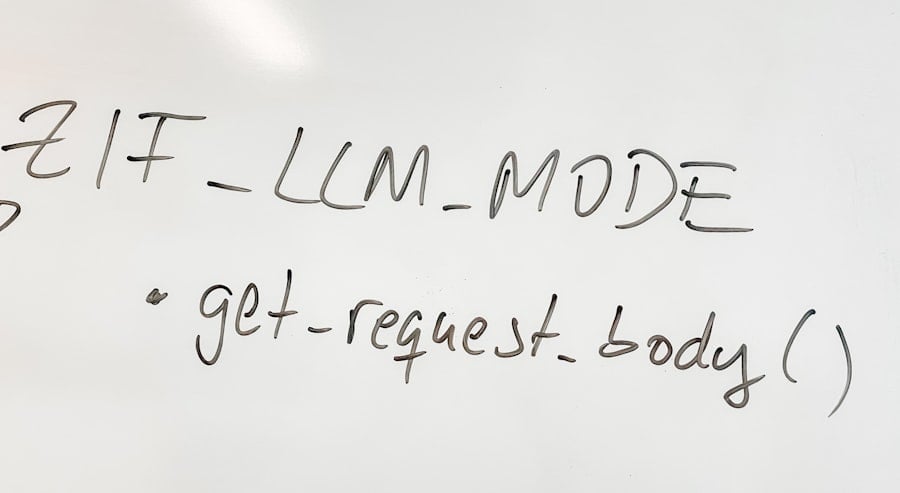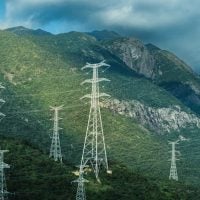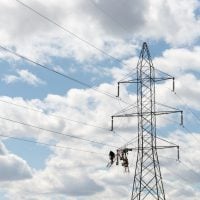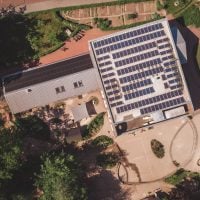In the realm of renewable energy, particularly solar projects, the establishment of a robust monitoring framework is paramount. Monitoring frameworks serve as the backbone for assessing the performance and impact of solar installations. They provide a structured approach to track energy production, operational efficiency, and overall project sustainability.
By implementing a comprehensive monitoring framework, organizations can ensure that their solar projects are not only meeting their intended goals but also contributing positively to the environment and local communities. Moreover, effective monitoring frameworks facilitate transparency and accountability. Stakeholders, including investors, community members, and regulatory bodies, require assurance that solar projects are functioning as intended.
A well-defined monitoring framework allows for the collection of reliable data that can be shared with stakeholders, thereby fostering trust and encouraging further investment in renewable energy initiatives. In essence, monitoring frameworks are not just about tracking performance; they are vital tools for demonstrating the value and impact of solar projects in a rapidly evolving energy landscape. Are You Working on Solar Innovation or Clean Energy Access? Join us to receive updates.
Key Takeaways
- Monitoring frameworks are crucial for the success of solar projects as they help in tracking performance, identifying issues, and ensuring compliance with standards.
- Clear objectives and goals must be set for the monitoring framework to align with the overall project objectives and provide a roadmap for implementation.
- Selecting the right monitoring tools and technologies is essential for accurate data collection and analysis, which is crucial for effective decision-making.
- Key performance indicators (KPIs) should be established to measure the success of solar projects and provide a basis for continuous improvement.
- Developing a comprehensive data collection and analysis plan is necessary to ensure that all relevant data is captured and utilized effectively for monitoring and reporting.
Setting Clear Objectives and Goals for the Monitoring Framework
The first step in developing a successful monitoring framework is to establish clear objectives and goals. These objectives should align with the overall mission of the solar project and reflect the specific outcomes that stakeholders wish to achieve. For instance, if the primary goal is to maximize energy output, the monitoring framework should focus on metrics that assess energy production efficiency, such as capacity factor and performance ratio.
Conversely, if community engagement is a priority, objectives might include measuring local job creation or community satisfaction levels. Setting SMART (Specific, Measurable, Achievable, Relevant, Time-bound) goals is essential for guiding the monitoring process. By articulating specific targets—such as achieving a 20% increase in energy output within the first year—organizations can create a roadmap for success.
Additionally, these goals should be revisited periodically to ensure they remain relevant and aligned with evolving project dynamics. This iterative approach not only enhances accountability but also encourages continuous improvement throughout the project lifecycle.
Selecting the Right Monitoring Tools and Technologies

Choosing the appropriate monitoring tools and technologies is critical for effective data collection and analysis in solar projects. The market offers a plethora of options ranging from basic data loggers to sophisticated software platforms that integrate real-time analytics and remote monitoring capabilities. When selecting tools, organizations should consider factors such as scalability, ease of use, and compatibility with existing systems.
For example, cloud-based monitoring solutions can provide real-time insights into system performance while allowing for remote access from anywhere in the world. These tools often come equipped with advanced analytics features that can identify trends and anomalies in energy production. Additionally, organizations should evaluate the cost-effectiveness of these technologies to ensure they provide value without straining project budgets.
Ultimately, the right tools will empower teams to make informed decisions based on accurate data, enhancing overall project performance.
Establishing Key Performance Indicators (KPIs) for Solar Projects
Key Performance Indicators (KPIs) are essential metrics that help organizations gauge the success of their solar projects. Establishing relevant KPIs allows teams to monitor progress toward their objectives and make data-driven decisions. Common KPIs for solar projects include energy production (measured in kilowatt-hours), system availability (the percentage of time the system is operational), and return on investment (ROI).
When defining KPIs, it is crucial to ensure they are aligned with the project’s goals and objectives. For instance, if community engagement is a priority, KPIs might include metrics related to local job creation or community feedback scores. Additionally, organizations should consider setting both short-term and long-term KPIs to provide a comprehensive view of project performance over time.
Regularly reviewing these indicators will enable teams to identify areas for improvement and celebrate successes along the way.
Developing a Comprehensive Data Collection and Analysis Plan
A well-structured data collection and analysis plan is vital for effective monitoring of solar projects. This plan should outline what data will be collected, how it will be collected, and who will be responsible for each aspect of the process. Data sources may include energy production data from inverters, weather data from local meteorological stations, and maintenance records from service providers.
In addition to outlining data collection methods, organizations should establish protocols for data analysis. This includes determining how often data will be reviewed and what analytical techniques will be employed to interpret the results. For example, organizations may choose to conduct monthly performance reviews to assess energy output against established KPIs.
By developing a comprehensive plan that encompasses both data collection and analysis, organizations can ensure they have the necessary insights to drive informed decision-making.
Implementing Regular Monitoring and Reporting Processes

Regular monitoring and reporting processes are essential for maintaining transparency and accountability in solar projects. Organizations should establish a schedule for routine performance assessments, which may include weekly or monthly reviews of key metrics. These assessments should be documented in reports that summarize findings and highlight any areas of concern.
In addition to internal reporting, organizations should consider sharing performance reports with external stakeholders such as investors or community members. This practice not only fosters trust but also encourages stakeholder engagement in project activities. By keeping stakeholders informed about project performance, organizations can build stronger relationships and garner support for future initiatives.
Integrating Remote Monitoring and Control Systems
The integration of remote monitoring and control systems can significantly enhance the efficiency of solar project management. These systems allow operators to monitor performance in real-time from remote locations, enabling quick responses to any issues that may arise. For instance, if a drop in energy production is detected, operators can investigate potential causes without needing to be physically present at the site.
Remote monitoring systems often come equipped with advanced analytics capabilities that can identify trends over time, helping organizations optimize system performance proactively. Additionally, these systems can facilitate automated alerts for maintenance needs or system malfunctions, reducing downtime and improving overall reliability. By leveraging technology in this way, organizations can enhance their operational efficiency while ensuring that their solar projects continue to deliver maximum value.
Ensuring Compliance with Regulatory Requirements and Standards
Compliance with regulatory requirements and industry standards is a critical aspect of managing solar projects effectively. Organizations must stay informed about local regulations governing renewable energy installations, including safety standards, environmental impact assessments, and grid interconnection requirements. Failure to comply with these regulations can result in costly fines or project delays.
To ensure compliance, organizations should develop a compliance checklist that outlines all relevant regulations and standards applicable to their projects. Regular audits should be conducted to assess adherence to these requirements and identify any areas needing improvement. By prioritizing compliance within their monitoring frameworks, organizations can mitigate risks while enhancing their credibility within the renewable energy sector.
Training and Capacity Building for Monitoring Framework Implementation
Successful implementation of a monitoring framework requires adequate training and capacity building for all team members involved in the process. Organizations should invest in training programs that equip staff with the necessary skills to utilize monitoring tools effectively and interpret data accurately. This may include workshops on data analysis techniques or hands-on training with specific software platforms.
Additionally, fostering a culture of continuous learning within the organization can enhance overall capacity building efforts. Encouraging team members to share insights and best practices can lead to innovative solutions for common challenges faced during project implementation. By prioritizing training and capacity building initiatives, organizations can empower their teams to take ownership of the monitoring process and drive project success.
Continuous Improvement and Adaptation of the Monitoring Framework
The renewable energy landscape is constantly evolving, necessitating a commitment to continuous improvement within monitoring frameworks. Organizations should regularly review their monitoring processes to identify areas for enhancement based on emerging technologies or changing project dynamics. This iterative approach allows teams to adapt their strategies in response to new challenges or opportunities.
Feedback loops are essential for fostering continuous improvement; organizations should actively seek input from team members involved in monitoring activities as well as external stakeholders. By incorporating diverse perspectives into the evaluation process, organizations can develop more effective monitoring frameworks that better align with stakeholder needs and expectations.
Case Studies and Best Practices for Successful Monitoring Frameworks in Solar Projects
Examining case studies of successful solar projects can provide valuable insights into best practices for implementing effective monitoring frameworks. For instance, a solar farm in California utilized advanced remote monitoring technology that allowed operators to detect issues before they escalated into significant problems. This proactive approach resulted in increased energy production and reduced maintenance costs.
Another example comes from a community solar initiative in New York that prioritized stakeholder engagement through transparent reporting practices. By sharing regular performance updates with community members, the project fostered trust and encouraged local participation in future renewable energy initiatives. These real-world examples highlight the importance of tailored monitoring frameworks that align with specific project goals while incorporating innovative technologies and stakeholder engagement strategies.
By learning from these best practices, organizations can enhance their own monitoring efforts and contribute to the broader success of solar projects worldwide. In conclusion, establishing an effective monitoring framework is crucial for maximizing the impact of solar projects. By understanding its importance, setting clear objectives, selecting appropriate tools, establishing KPIs, developing comprehensive plans, implementing regular processes, integrating technology, ensuring compliance, investing in training, committing to continuous improvement, and learning from case studies, organizations can create robust frameworks that drive success in renewable energy initiatives.









































